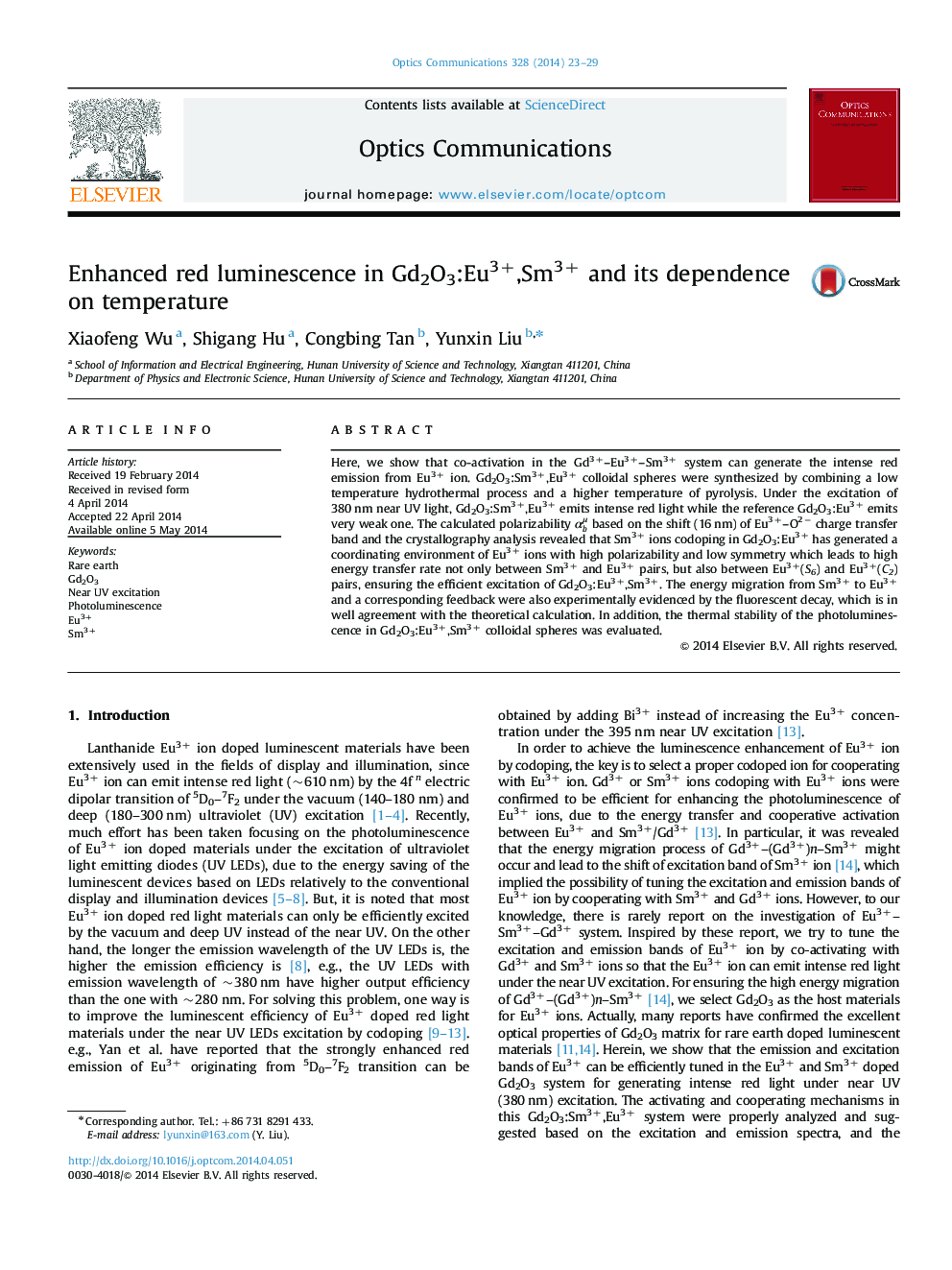| Article ID | Journal | Published Year | Pages | File Type |
|---|---|---|---|---|
| 1534569 | Optics Communications | 2014 | 7 Pages |
Here, we show that co-activation in the Gd3+–Eu3+–Sm3+ system can generate the intense red emission from Eu3+ ion. Gd2O3:Sm3+,Eu3+ colloidal spheres were synthesized by combining a low temperature hydrothermal process and a higher temperature of pyrolysis. Under the excitation of 380 nm near UV light, Gd2O3:Sm3+,Eu3+ emits intense red light while the reference Gd2O3:Eu3+ emits very weak one. The calculated polarizability αbμ based on the shift (16 nm) of Eu3+–O2− charge transfer band and the crystallography analysis revealed that Sm3+ ions codoping in Gd2O3:Eu3+ has generated a coordinating environment of Eu3+ ions with high polarizability and low symmetry which leads to high energy transfer rate not only between Sm3+ and Eu3+ pairs, but also between Eu3+(S6) and Eu3+(C2) pairs, ensuring the efficient excitation of Gd2O3:Eu3+,Sm3+. The energy migration from Sm3+ to Eu3+ and a corresponding feedback were also experimentally evidenced by the fluorescent decay, which is in well agreement with the theoretical calculation. In addition, the thermal stability of the photoluminescence in Gd2O3:Eu3+,Sm3+ colloidal spheres was evaluated.
